Main navigation
History of the Department of Physics and Astronomy
"Annals of a University of Iowa Department, From Natural Philosophy to Physics and Astronomy." This history written by James P. Wells traces the department’s beginnings in 1856 as the Natural Philosophy department to 1980.
James Van Allen
Prof. James Van Allen helped the University of Iowa become a world leader in space research, and has been called one of the greatest and most accomplished American space scientists of our time. Learn more about his legacy here.
Leadership in Space Physics
Building on the legacy of space pioneer Dr. James Van Allen, the department is an established leader among universities in Space Physics. Starting with the launch of Explorer 1 in 1958, our faculty and staff have built instruments for spacecraft including Voyager, Galileo, Cassini, Polar, Cluster, Juno, Van Allen Probes, and Magnetospheric Multiscale and sounding rockets. Since then, we have developed instruments flown on 70 spacecraft for 60 successful missions.
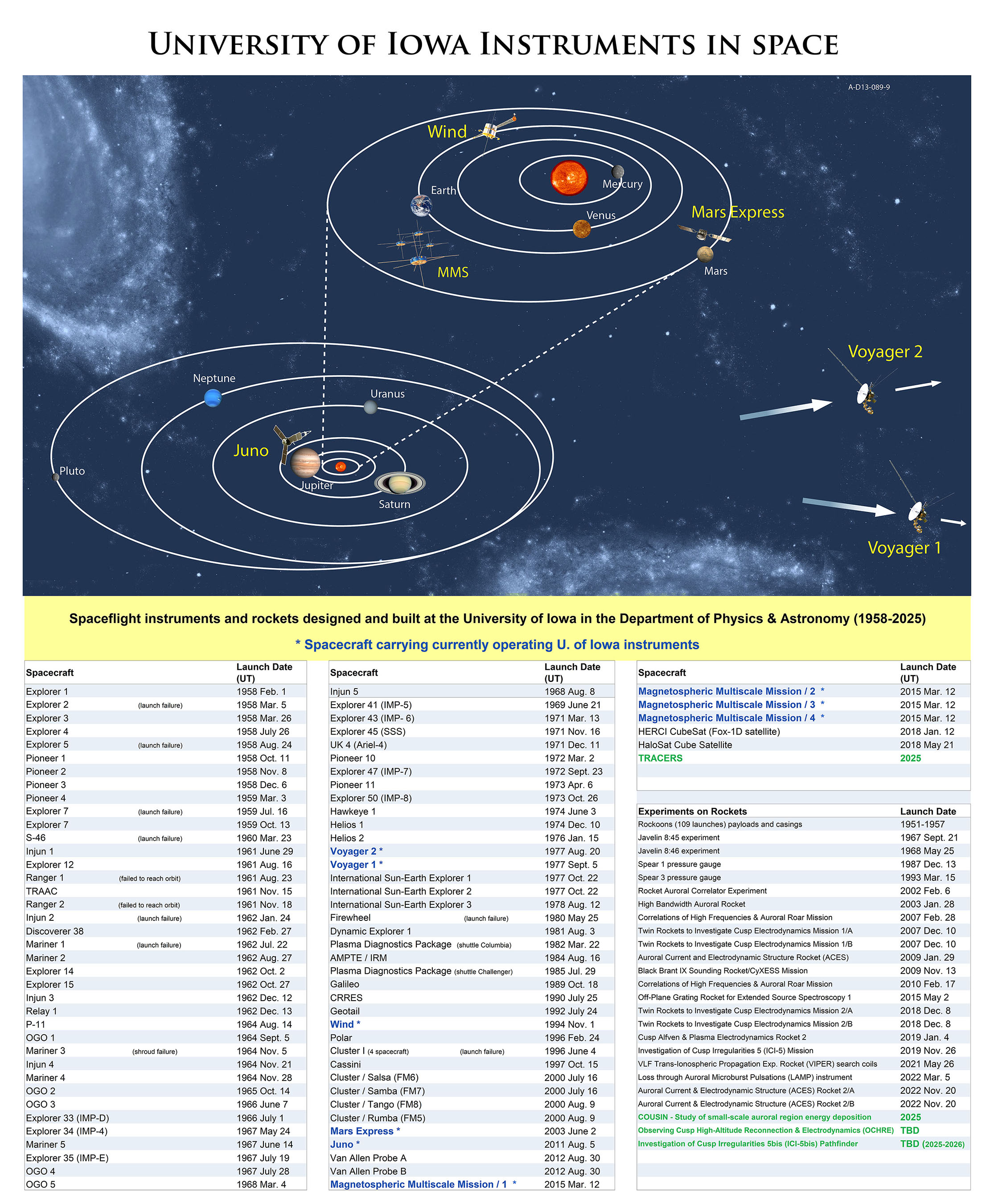
Building history
- Van Allen Hall: see this article by Tim Weitzel detailing the history of funding and construction of the building, completed in 1964.
- MacLean Hall: opened in 1912, this building was the home of the department until it moved to Van Allen Hall. It housed an astronomical observatory, a Foucault pendulum, Van Allen's unmanned space mission projects, and even an atomic particle accelerator.
- Observatories: see this article from Iowa Now, UI archivist takes a look back on the UI’s history of looking up, a history of observatories on campus.
- Physics Library History
Department leadership
- 1951-June 1985, (Head) James Van Allen
- June 1985 - Nov. 1, 1991 — (Chair) Dwight Nicholson
- Nov. 1, 1991 - June 1997 — (Chair) Gerald Payne
- July 1997 - April 2001 — Departmental Executive Officer (DEO) Wayne Polyzou
- May 2001 - June 2009 — (DEO) Thomas Boggess
- July 2009 - June 2014 — (DEO) Mary Hall Reno
- July 2014 - June 2020 — (DEO) Fred Skiff
- July 2020 - December 2022 — (DEO) Philip Kaaret
- January 2023- June 2025 — (DEO) Mary Hall Reno
- July 2025-present — (DEO) Gregory Howes
Timeline of Physics and Astronomy at the University of Iowa
1855-present
- March 1855-1858
The first State University of Iowa organization offered science instruction in the Dept. of Natural Philosophy and in the Dept. of Mathematics.
- July 1858-1859
The university offered classes only in the Normal Department (for teacher education) due to insufficient resources.
- 1867-1870s
The University changed the name of the Dept. of Chemistry and Natural Philosophy to Dept. of Physical Sciences. The University opened a new building (North Hall) that housed the physical sciences laboratories.
- 1874
The Dept. of Mathematics built the first observatory (where Jessup Hall would later be located) that housed a new 5-inch refractor telescope.
"Work has already been commenced and ere many moons the students of the University will view the starry dome through one of the finest telescopes, from one of the best observatories in the North West. Prof. Leonard is superintending the work. He is enthusiastic to have it finished in time to see the next if not the present comet."
-University Reporter story
- June 19, 1888
The Department of Physics was established; Prof. Andrew A. Veblen was named acting Chair.
- 1890-91
Department of Physics classes: (1) Mechanics. (2) Electricity and Magnetism. (3) Sound, Light. (4) Physical Measurements and Observations. (5) Physical Measurements and Determination of Constants. (6) Crystallography, investigation into some special subject. (7) Dynamos and Motors, lectures, and laboratory work. (8) Theory of Electricity, Theory and Practice of Photometry. (9) Theory of Electricity, Transformers. (10) Lectures on Distribution and Transmission of Electricity, Telegraph and Telephone.
Lectures and laboratory courses in selected topics as circumstances may require or the facilities for the instruction will permit.
Classes related to astronomy were offered in the Department of Mathematics.
- 1891
A small wooden observatory was erected on the central campus: the old observatory on Clinton Street stood idle.
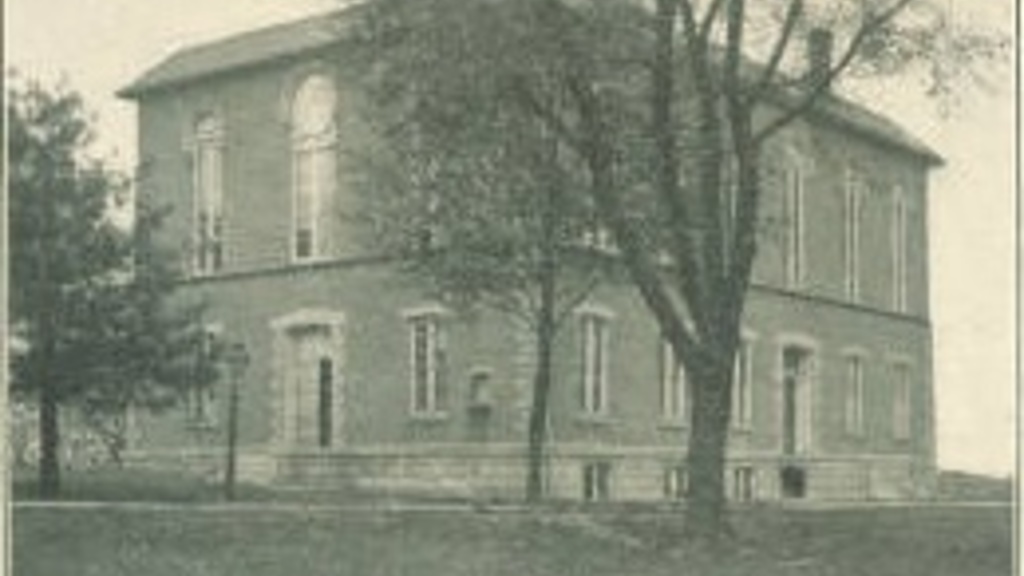 1900-1902
1900-1902A new building, the Hall of Liberal Arts, provided a location for the new University library, and the Dept. of Physics inherited North Hall, renamed the Hall of Physics. Astronomy instruction was offered by the Dept. of Mathematics occasionally due to a faculty shortage.
 1912
1912The construction of a five-story physics building (later named MacLean Hall) was approved. Prof. Stewart required the building be durable to withstand heavy equipment, solid/rigid enough to protect delicate experiments, and the names of major scientists engraved in stone around the top of the building. The Physics Building provided research and laboratory space, lecture rooms, physics workshops, plus areas for mathematics, electrical engineering, and the fine arts. In 1912, there were four physics faculty members.
- 1917-1918
During World War I, the science faculty’s efforts were re-focused on consulting with the war department and developing material and equipment in support of military efforts.
- 1924
The observatory on the central campus was torn down to make room for the building of University Hall (later renamed Jessup Hall).
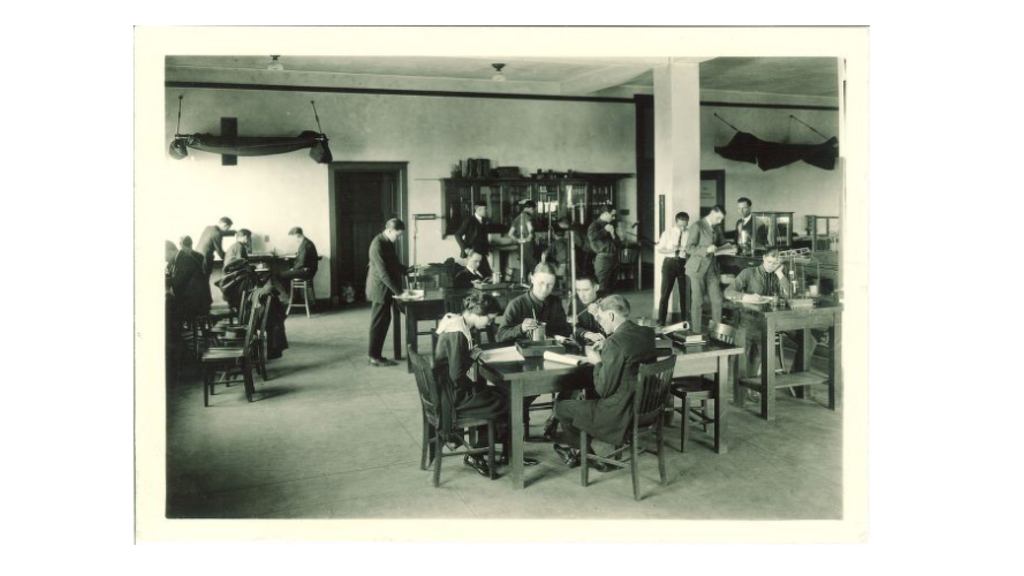 1930s
1930sDuring the depression years – the University Catalog descriptions remained the same in the 1930s through 1941:
The Physics Building, one of the central groups, is occupied exclusively by mathematics and physics. It offers unexcelled opportunities for study and research. It is the Mathematics-Physics Library of about 14,000 volumes with 190 current journals. In the laboratories the equipment is abundant, diversified, and in some aspects unique. The more specialized apparatus is described in bulletins published by the laboratory. Recent research has been chiefly in the newer physics, atomic and nuclear structure, intensity and polarization in spectra, resonance radiation, electron impacts, and X-rays, though contributions are constantly being made in other lines.
- 1940-1941
In May 1940, excavation began for an underground room on the east side of the Physics Building to house a Van de Graaff generator, but installation of the generator was suspended until after World War II.
Beginning in 1941, physics faculty redirected efforts to support U.S. defense purposes, which resulted in faculty consulting with or joining military and government organizations. For teaching purposes, the University added lecturers plus graduate students as instructors. Temporary faculty members were added to develop materials and equipment to support war efforts.
- 1948
Completion of a Van de Graaff generator located underground next to the Physics Building near the Old Capitol.
- 1959
The department name was changed to the Department of Physics and Astronomy.
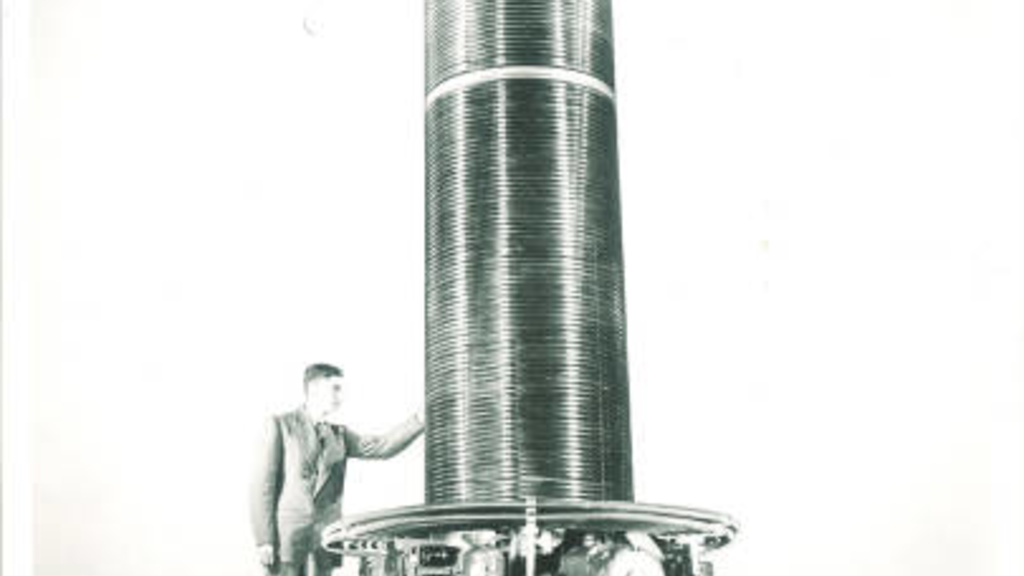 1964
1964Completion of the accelerator tower at the corner of Dubuque Street and Iowa Avenue.
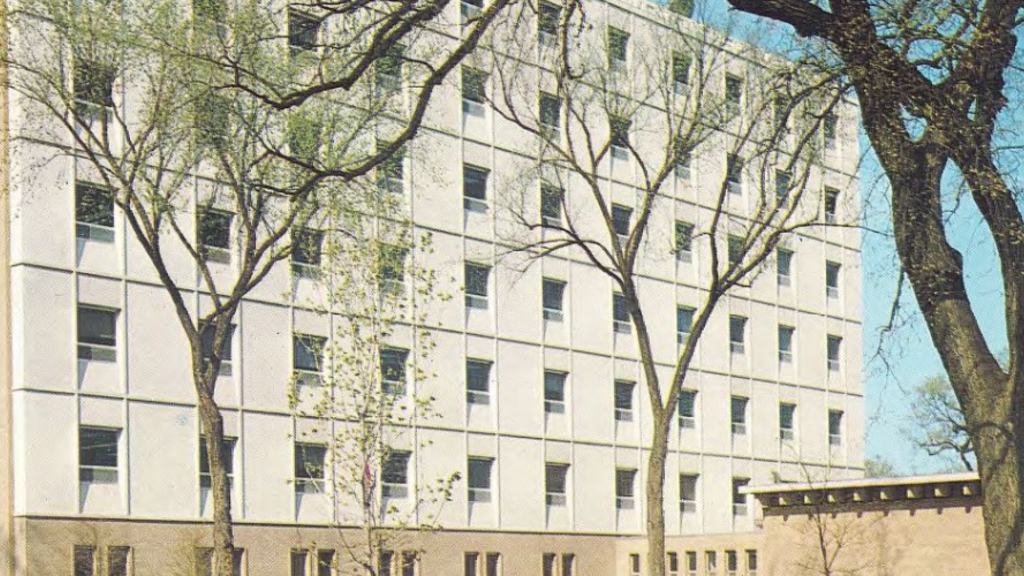 1965
1965Completion of a new Physics Research Center building at Jefferson St. and Dubuque St.
- 1967
Completion of the North Liberty Radio Observatory.
- 1970
Completion of an addition to the Physics building at Jefferson St. and Linn St.
- 1972
Addition of two telescope domes on the Physics building roof to house a 16-inch Celestron reflector telescope and a century-old 5-inch Grubb refractor telescope that was refurbished and relocated from the former Physics building roof.
- 1976
Renovation of the Physics building basement for installation of plasma physics research laboratories.
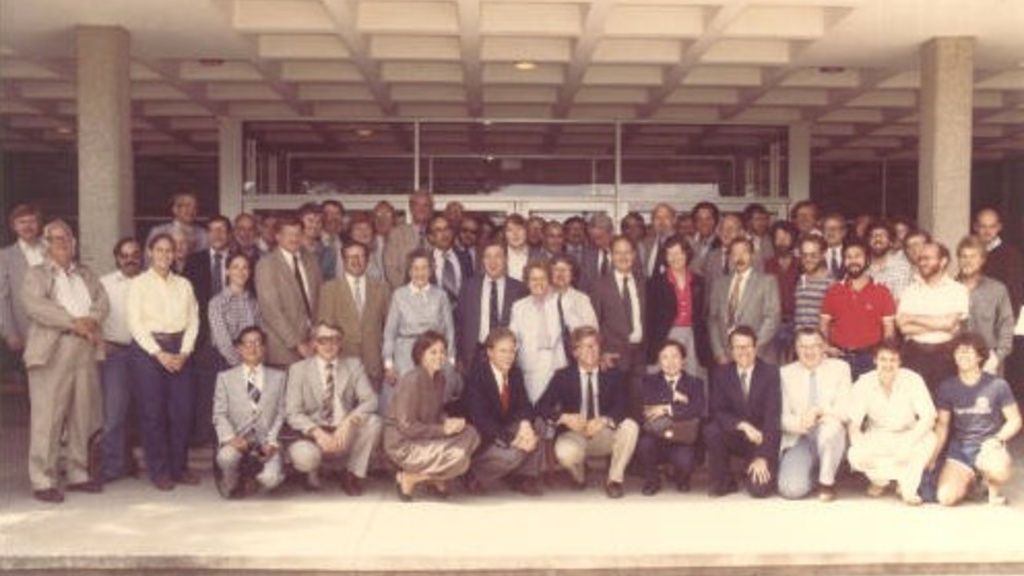 1982
1982The Physics Research Center building was renamed Van Allen Hall, dedicated June 10.
- November 1, 1991
A disgruntled physics graduate student murdered the Department of Physics and Astronomy DEO, two physics faculty, one physics graduate student, Associate Vice President for Academic Affairs T. Anne Cleary, and critically wounded a student working in the Office of Academic Affairs.
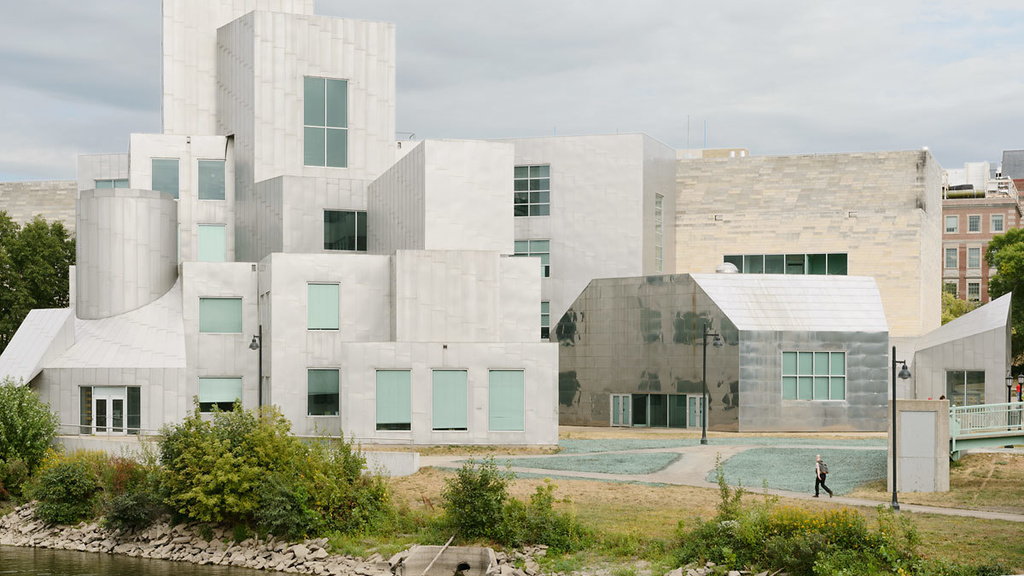 1992
1992Completion of the Laser Research Center, which was later named Iowa Advanced Technology Laboratories.
- 1993
Operation of the North Liberty Radio Observatory was transferred to the National Radio Astronomy Observatory and became one of ten telescopes in the Very Long Baseline Antenna (VLBA).
- 1998
Demolition of the Van de Graaff Accelerator Tower at the corner of Dubuque Street and Iowa Avenue.
- 2003
The UI Department of Physics and Astronomy Hills Observatory research telescope was donated to the Cedar Amateur Astronomers. The astronomers' group refurbished, installed, and operated the telescope at the Observatory at Palisades-Dows Preserve in Linn County, Iowa.
- 2010
Closed, then relocated the Department of Physics and Astronomy library to the University of Iowa Sciences Library, 120 East Iowa Avenue.
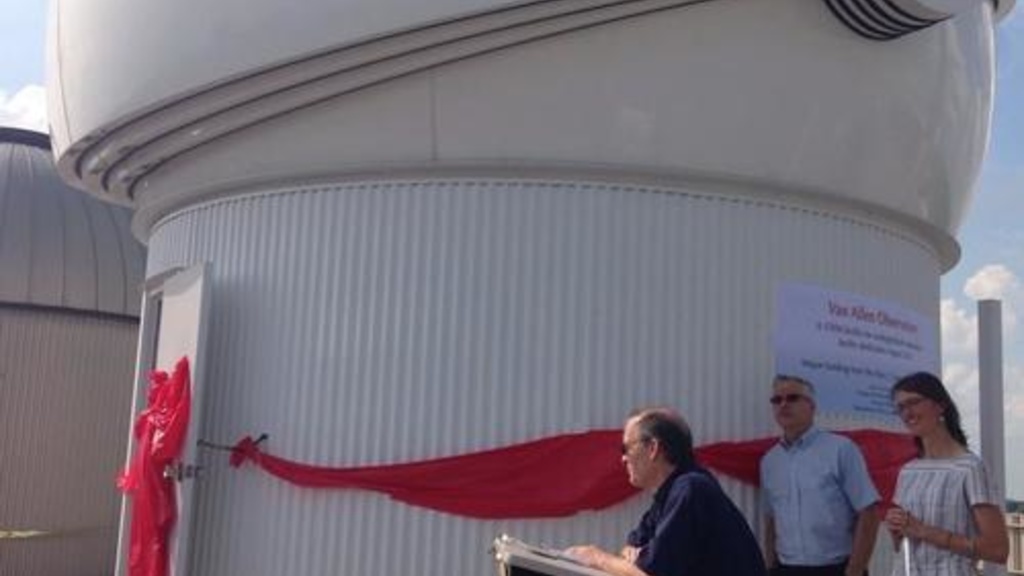 August 29, 2014
August 29, 2014Dedication of new James Van Allen Observatory telescope dome on the roof of Van Allen Hall.